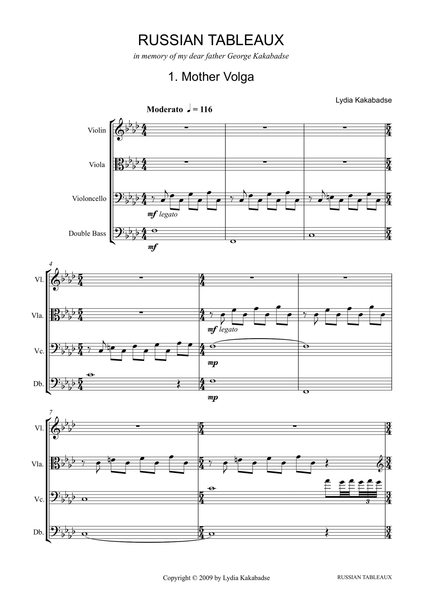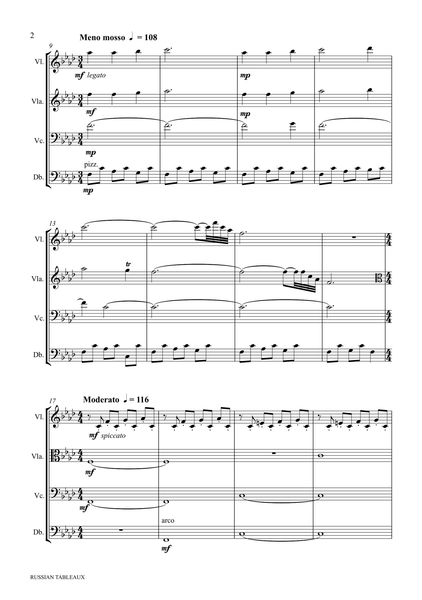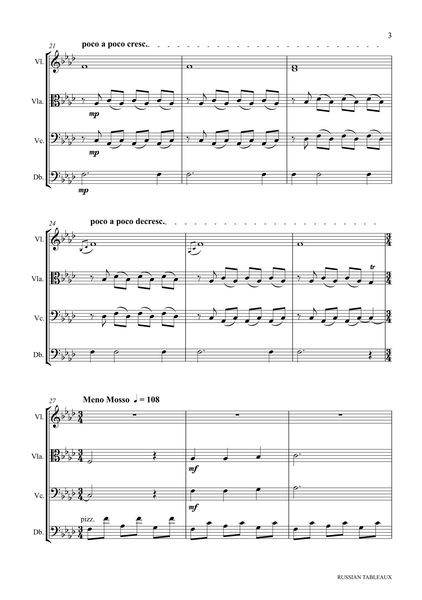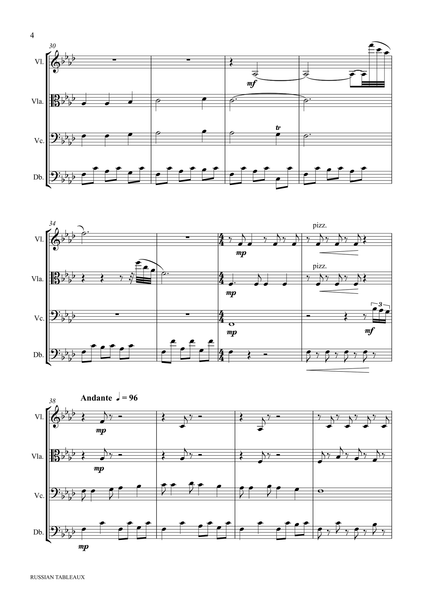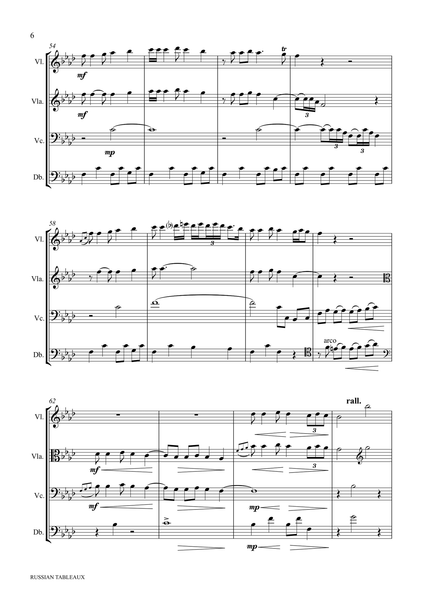Lydia Kakabadse: Russian Tableaux – for “alternative” string quartet (NXP076)
This is a sheet music edition of Russian Tableaux by the composer Lydia Kakabadse.
Sheet music for “alternative” string quartet (violin, viola, cello, double bass)
Duration: 11 minutes
Score: 24 pages
Parts: 24 pages
Audio Samples
Preface and programme notes
Russian Tableaux was written in memory of my Russian born father, Dr George Kakabadse, who was the greatest influence in my life and immensely supportive of my creative projects.
Completed in September 2009 for violin, viola, cello and double bass, Russian Tableaux displays such distinctive Russian traits as rich melody and texture, an abundance of colour, low register strings and strong bass. The work has been recorded on the Naxos label and is included in my chamber album The Phantom Listeners.
1st movement – Mother Volga
The river Volga, which has held much importance in Russian life, is known as the mother of Russian civilization and came to be called “Mother Volga”. Accompanied by the double bass, the piece opens with the cello, followed in turn by the viola and then the violin, each representing a tributary that flows into the river. The river gathers momentum as the cello announces the main theme, which is taken up by the upper strings against pizzicato double bass. The viola attempts to steer a steady course against the meandering strings and, following a variation of the main theme, brings the piece to an end with arpeggio like runs.
2nd movement – 1917
Depicting the aftermath of the Russian Revolution of 1917 and the ensuing misery and sense of desolation, this movement opens with the cello playing the main theme grave con dolore, accompanied by the double bass. This theme is then taken up by the violin and later by the viola in their lower register. Despite an increase in tempo, where the violin plays a variation of the theme, the feeling of despair cannot be shaken off. This is characterized by the melancholy tone reflected in the continual use of the minor key, the repetition of the same notes and a return to the opening theme.
3rd movement – Dance of the Matryoshka Dolls
Also known as a Russian doll, the matryoshka is a hollow wooden doll containing a number of smaller dolls. The dance starts fast and lively and the first theme announced by the violin, characterizes the dainty dancing of the smaller dolls. In contrast, the 2nd theme when played by the double bass at a far slower tempo characterizes the heavy plodding movements of the larger dolls. The tempo reverts back to the original allegro where the first theme is now played by the viola followed by frequent interplay between the strings, bringing the dance to a fast and furious close.
Lydia Kakabadse







